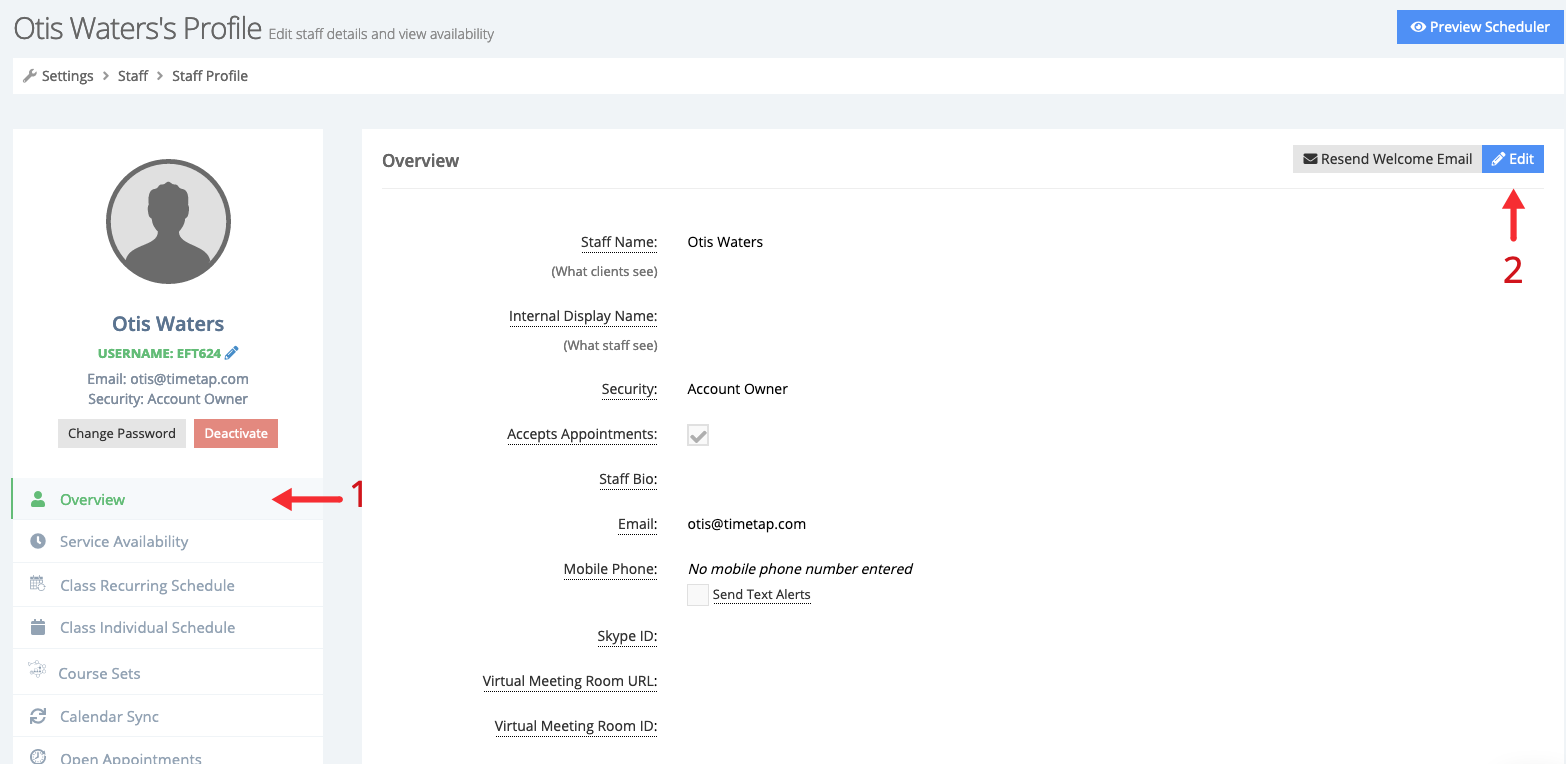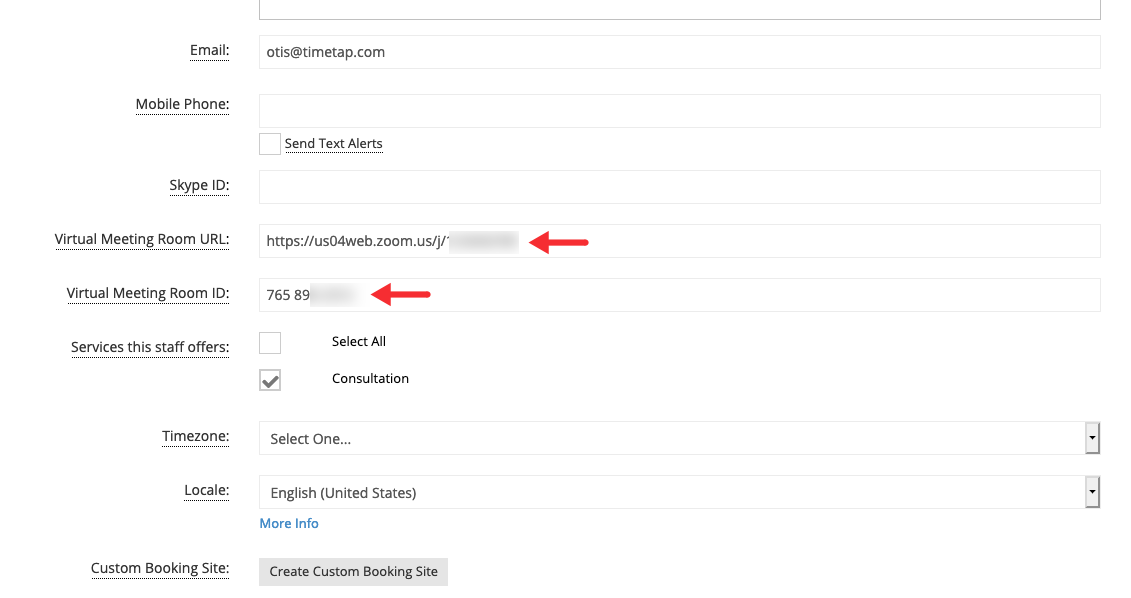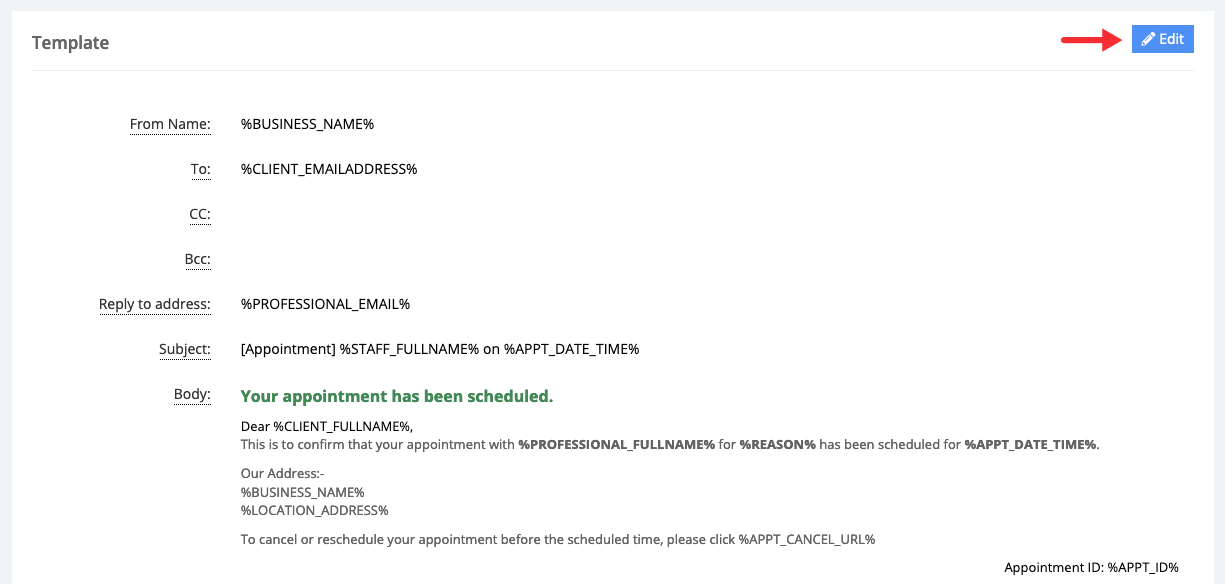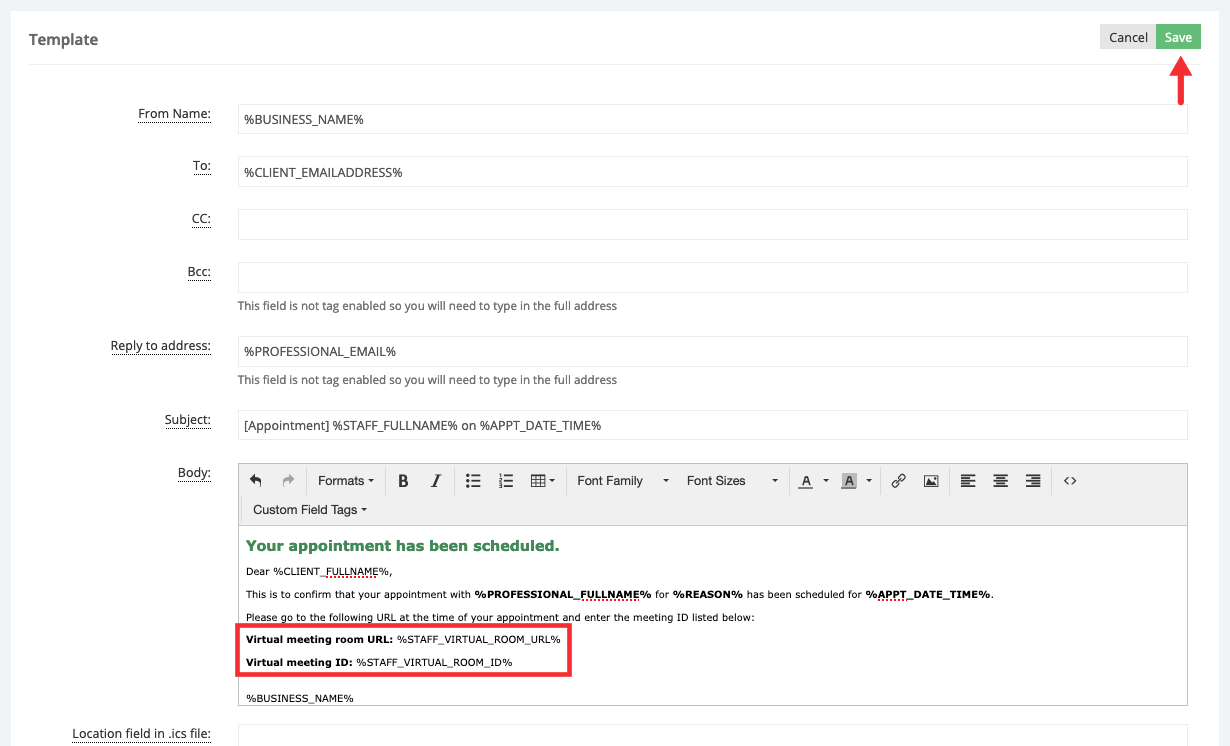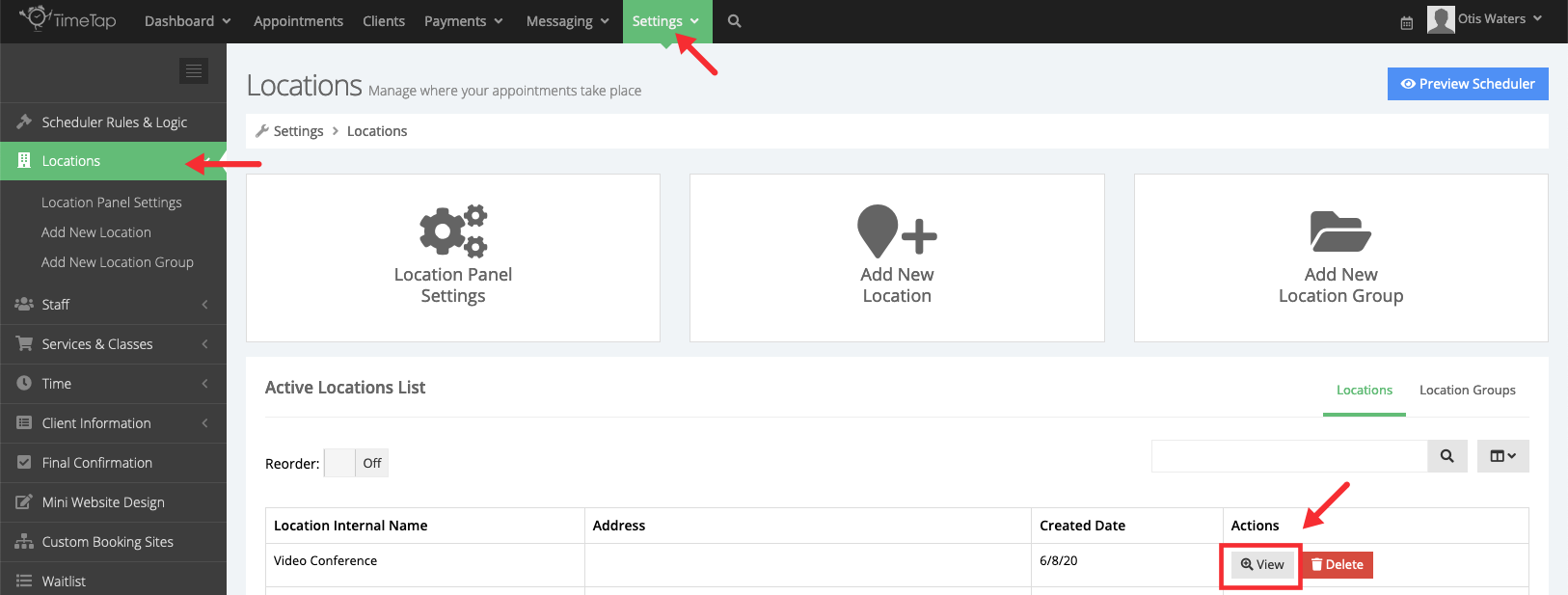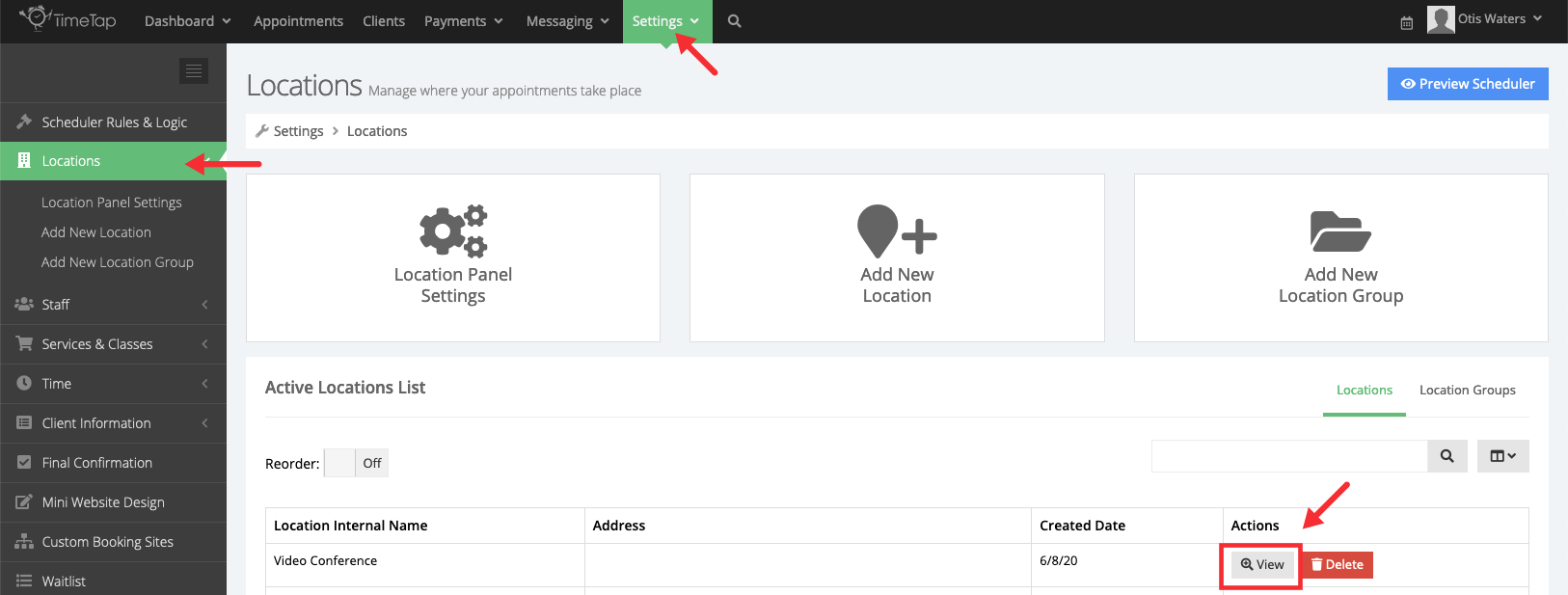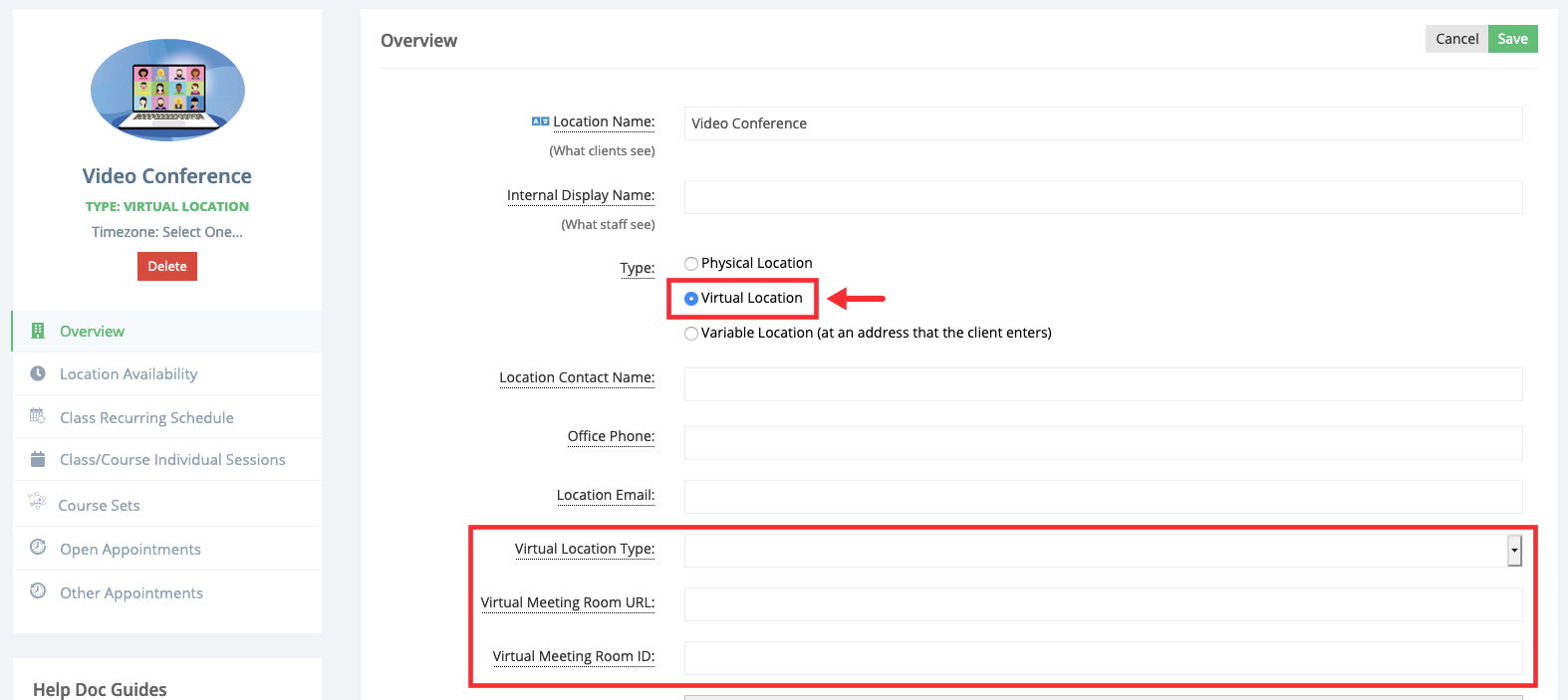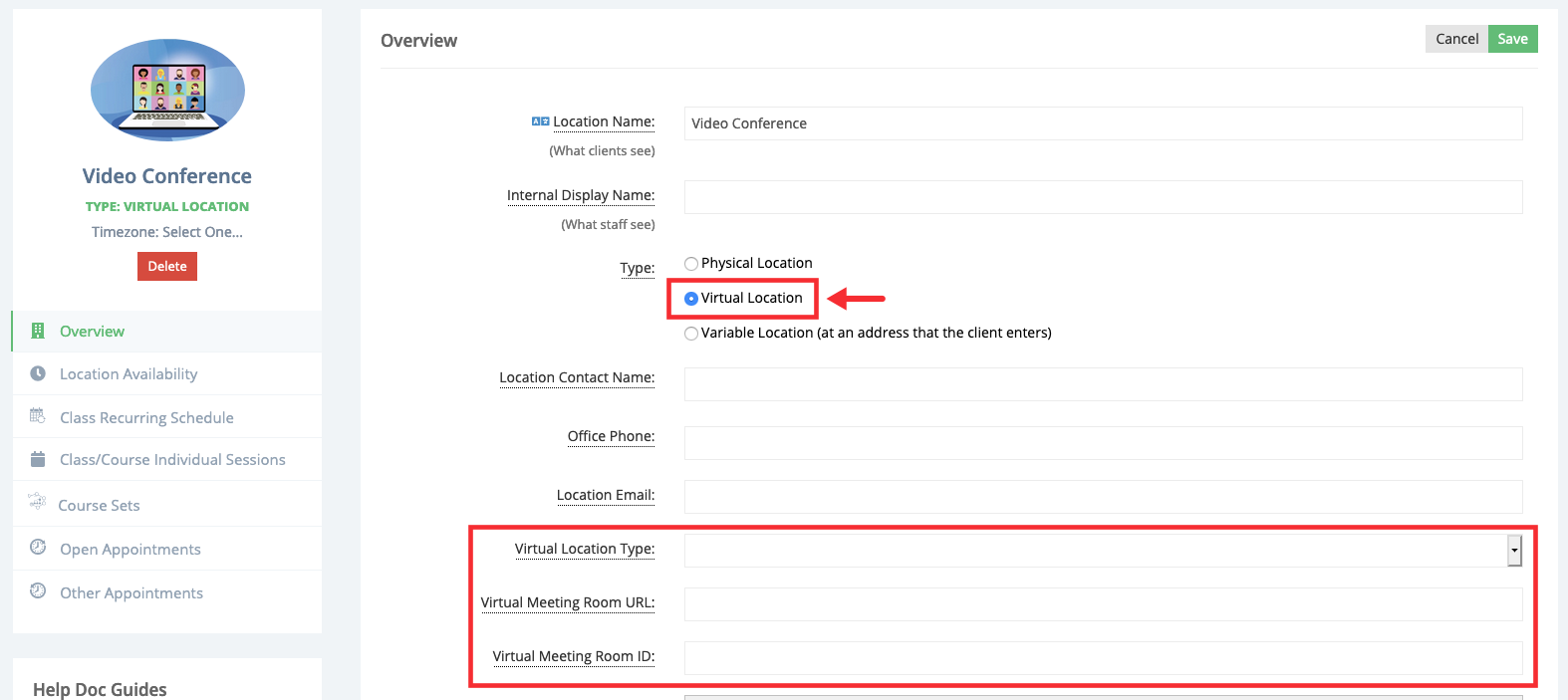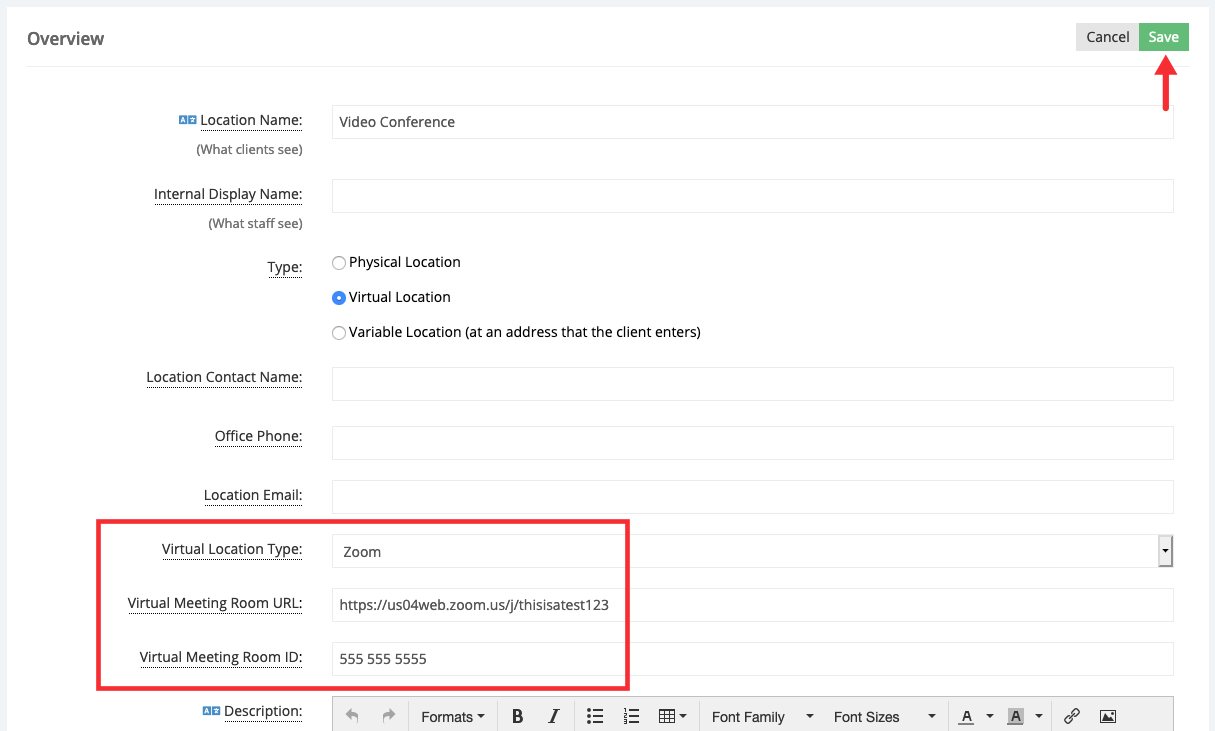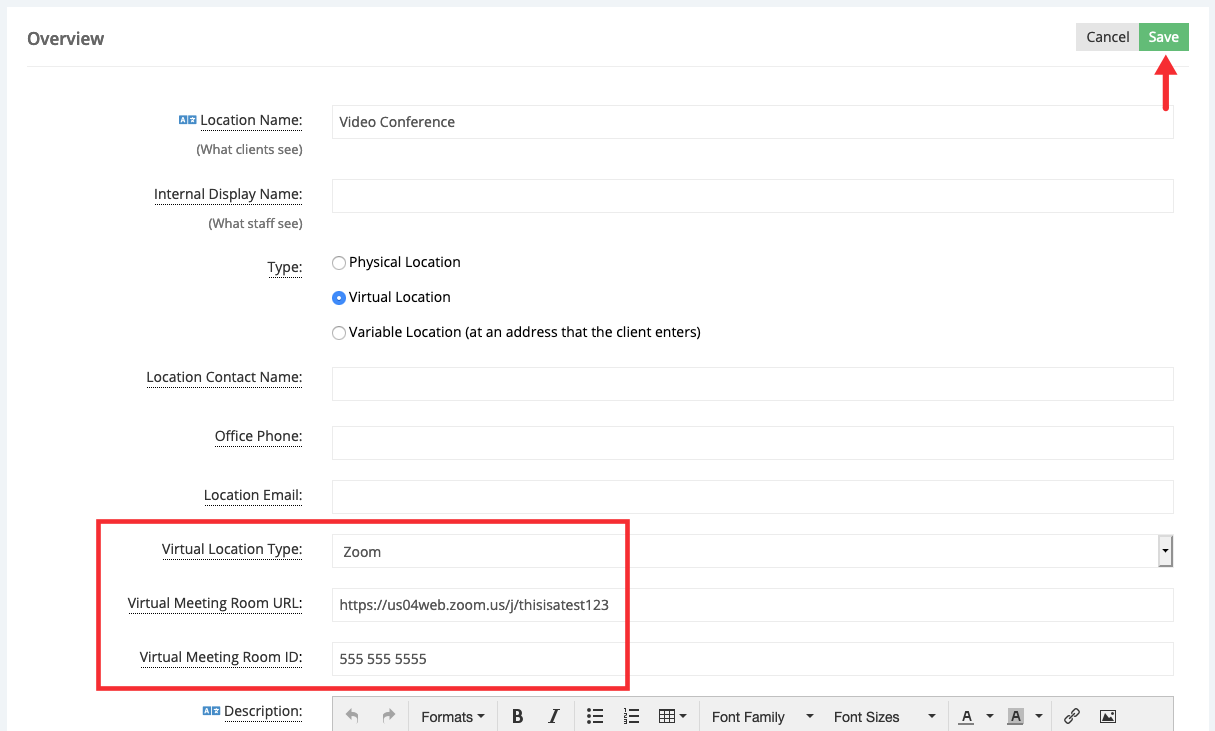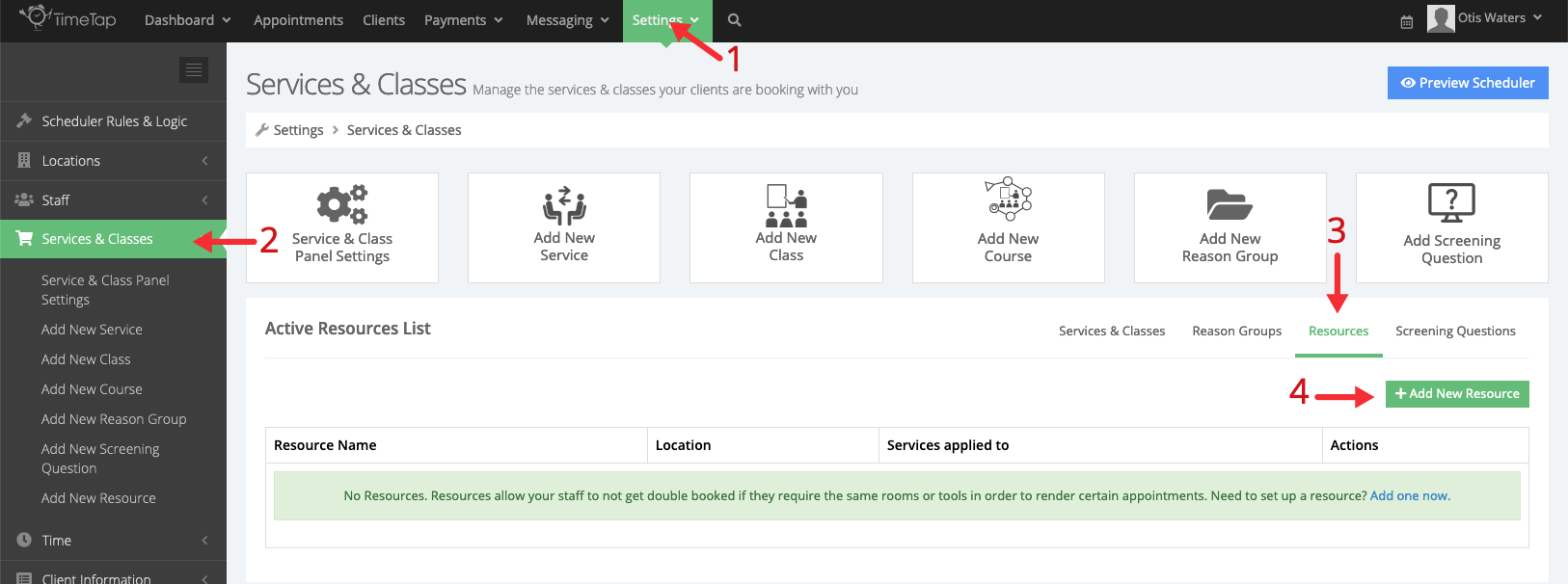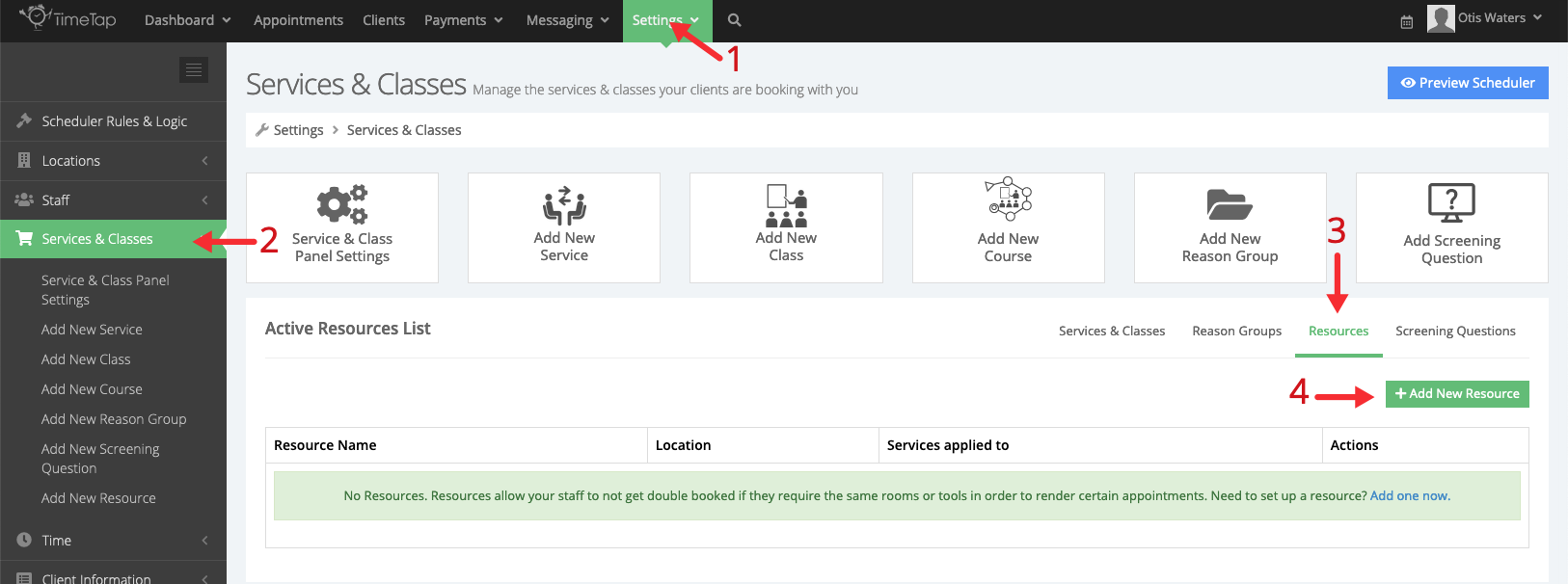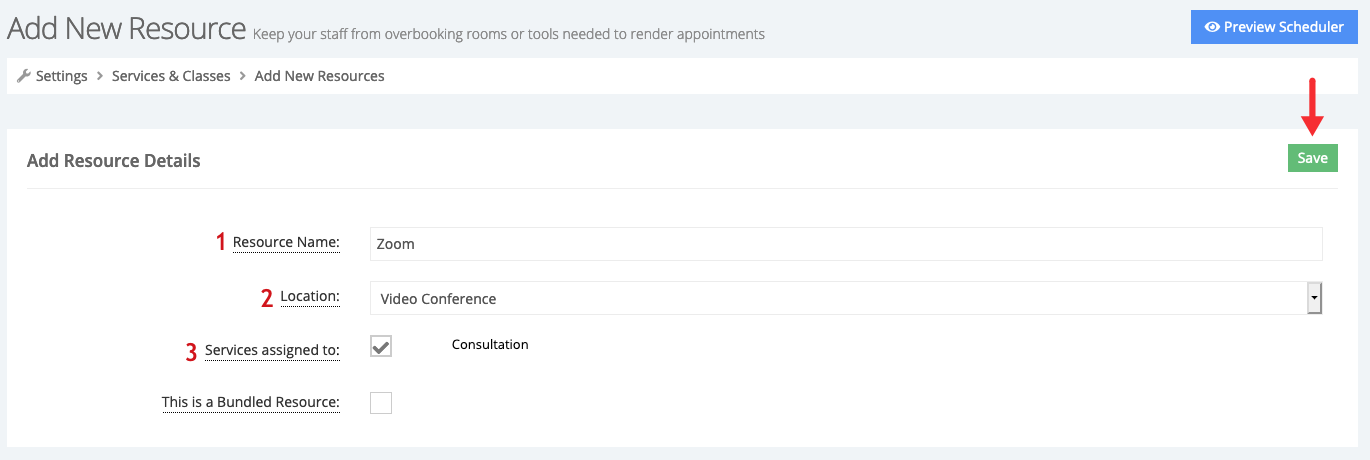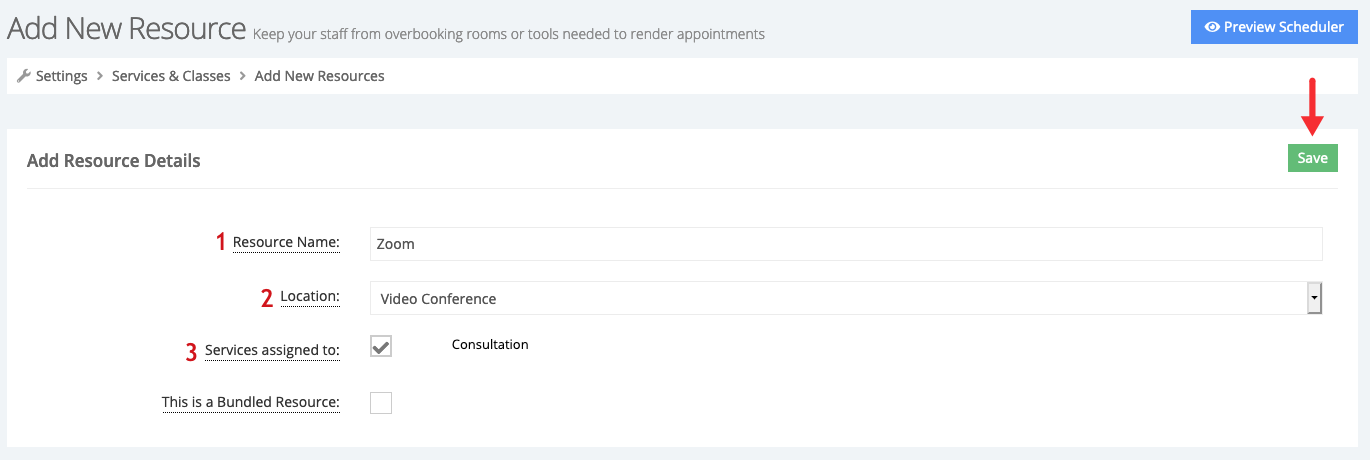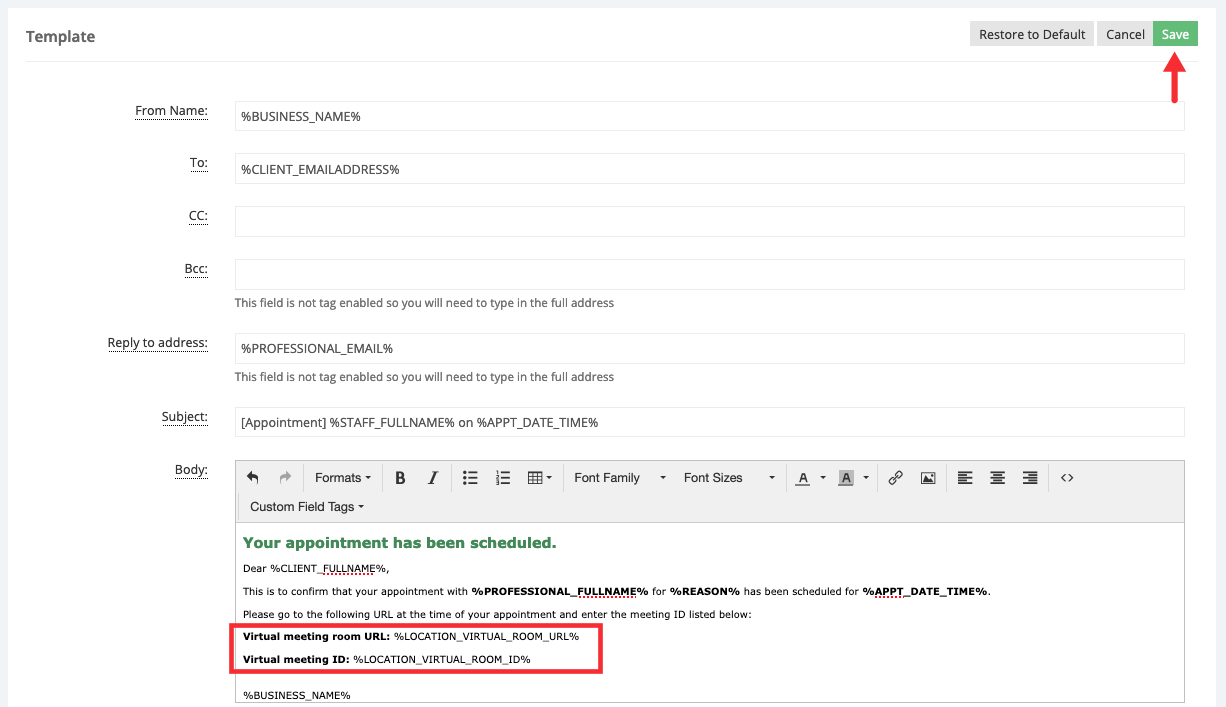Virtual locations are intended to allow your clients to schedule appointments with you and your staff to take place over the phone, a video conference, or any other type virtual meeting service. In this page we’ll discuss how to setup your location and staff profiles so you can share your virtual meeting information prior to the time of the appointment.
We’ll cover how to setup your account whenthe following scenarios:
In this example we’ll assume that our business offers consultation appointments over the video conferencing platform Zoom. Each staff member has their own unique meeting room URL and meeting room ID. We want to setup our account so that if a client schedules an appointment to take place in Zoom, the information of the staff they’ll be meeting with is sent to them in the confirmation email.
We’ll begin by going to the staff’s profile, and while in the Overview tab click Edit:
While in edit mode, paste the meeting room URL and in the Meeting Room URL field and the meeting room ID in the Meeting Room ID fields and click Save:
Move your cursor over the Virtual Meeting Room URL and Virtual Meeting Room ID to see helpful tooltips about the email tags we need to use to populate the information we just entered in our appointment templates. To populate the virtual meeting room URL use %STAFF_VIRTUAL_ROOM_URL% and to populate the meeting room ID use %STAFF_VIRTUAL_ROOM_ID%:
Next, we’ll add the email tags corresponding to the Virtual Meeting Room URL and Virtual Meeting Room ID fields in the confirmation email template, these tags can also be added in the other appointment related templates such as the reminder. We’ll go to Messaging > Appointment Templates:
We’ll then locate the New Appointment by Client template and click View, after view is clicked we’ll be directed to the Templates in Category section, click View next to the reason or language specific template you want to update (optional), in our case we’ll click view next to the default template:
Once in the template profile, we’ll scroll down to the Template section and click Edit:
After entering the virtual meeting instructions, we’ll click Save to update the template:
Now, when a client schedules an appointment with this staff member, the staff’s virtual meeting information will be added to the confirmation template that the client receives:
In this scenario we’ll cover how to share the virtual meeting information with your clients if you and your staff share one virtual room for appointments.
We’ll begin by ensuring that our location type is set to Virtual, go to Settings > Locations > and clicking View next to the location we want to update:
Once in the location’s profile, click Edit in the Overview section and ensure that the type is set to Virtual Location, notice that when you make this selection the fields “Virtual Location Type”, “Virtual Meeting Room URL”, and “Virtual Meeting Rom ID” will appear:
For this example we’ll select Zoom as the virtual location type, enter the meeting room URL and meeting room ID, then click Save:
Move your cursor over the Virtual Meeting Room URL and Virtual Meeting Room ID to see helpful tooltips about the email tags we need to use to populate the information we just entered in our appointment templates. To populate the virtual meeting room URL use %LOCATION_VIRTUAL_ROOM_URL% and to populate the meeting room ID use %LOCATION_VIRTUAL_ROOM_ID%:
Next, we’re going to create a resource so that appointments are not double booked at the virtual meeting room, we wouldn’t want clients to join meetings that are not pertinent to them. We’ll go to Settings > Services & Classes > select the Resources tab and click Add New Resource button:
In the Add New Resource screen, we’ll name our resource (1), select the location where the resource is being utilized (2) and assign it to the service(s) that utilize this resource (3), then click Save:
Finally, we’re going to add the tags %LOCATION_VIRTUAL_ROOM_URL% and %LOCATION_VIRTUAL_ROOM_ID% in the confirmation email template, these tags can also be added in other appointment related templates, such as the reminder template. We’ll go to Messaging > Appointment Templates
We’ll then locate the New Appointment by Client template and click View, after view is clicked we’ll be directed to the Templates in Category section, click View next to the reason or language specific template you want to update (optional), in our case we’ll click view next to the default template:
Once in the template profile, we’ll scroll down to the Template section and click Edit:
After entering the virtual meeting instructions, we’ll click Save to update the template:
Now, when a client schedules an appointment at the virtual location, the location’s virtual meeting information will be added to the confirmation template the the client receives:
